In the first week of being published, this post: “How Much Developers Cost in Different Countries”, received over 1.6k unique page views.
That’s not bad for 1 week, but the cherry on top came at the end of the week, when it was covered here by Small Biz Trends, which resulted in over 247 social shares and a link from a high authority site (Moz DA of 82).


We’ve written before about our community content promotion process, but here we’ll go through a complementary process for getting noteworthy blog posts covered by industry publications. We’ll walk through exactly what we did to get a blog post for one of our clients covered by a DA 82 publication.
As usual, we’ll spare you cliches about “adding value” and “personalizing the pitch” and instead talk matter of factly about the exact tactics we used (like how we use Google News search and why we only pitch one journalist at a publication), how well our tactics worked, and what we could do better next time.
First, Create Newsworthy Content
What made this particular piece a success?
It begins with the intent to create content that is “press-worthy”.
Our goal here was to create content that journalists would find interesting enough to cover, which we feel means the content needs to be hard to replicate.
We broke down the components of this client case study to the essential parts that made it a success.
- We leveraged our client’s data that provided unique new insights that no one else has covered before
- This was a very involved data analysis project – which makes it hard to replicate and noteworthy to news outlets
- It is on-trend. Freelancing and the gig economy are relevant to the tech industry today
Our data was taken from our client’s survey of thousands of freelance developers, so we knew we were working with fresh data that had never been covered before.
But we didn’t just write a blog post talking about general trends. We wanted something that would stand out. We wanted readers (and journalists) to be able to scroll through good-looking, easy to interpret graphs, and we wanted bloggers to also be able to grab some of the graphs and republish them on their own sites. So we hired an Excel specialist to analyze the dataset of developers and their hourly rates, and extract how those rates differ by city, country, region, tech stack and more.
This took a decent amount of work.
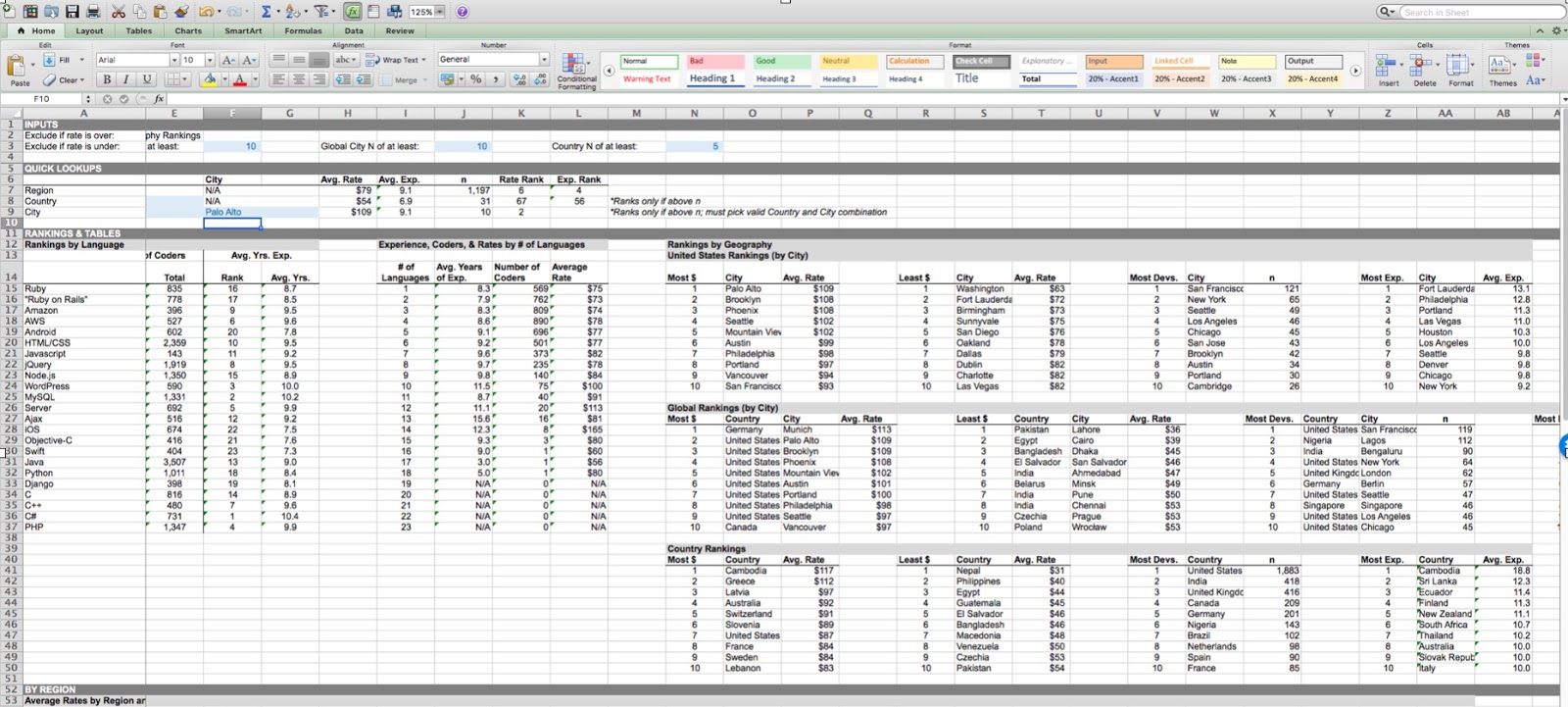
But that’s the point. Journalists aren’t going to cover a story on a company blog that’s easy for any other company to produce: 5 ways to do X, how to do Y, case study about Z. So work was required to make this hard to replicate.
The theme of the data was to help startup founders make cost-saving decisions in their hiring process.




In the end, we felt the piece the piece was pretty good, and clearly it got traction. But after this process we got some more ideas on how we could have made it even more “press worthy” which we discuss at the end of this article.
Mastering the Art of the Pitch
So what makes a publication worth pitching to?
Several factors:
- Journalists must be interested in covering your topic
- The publication’s reader base must overlap with your customer base
- The publication has preferably already covered similar types of stories
Our goal is not just to pitch every tech publication you have ever heard of. We are aiming to get our data piece in front of as many relevant journalists that would actually consider writing about it.
The following steps are important to getting a story in front of the right journalists, which greatly increases your chances of getting coverage.
Step 1: Finding Relevant Publications
The very first step in the pitching process is to find relevant publications. I like to start with a Google News search for the topic of the article. In this case, I searched for every permutation of “freelance developer” I could think of and used the “OR” operator to join them together.

Now, this pulls up articles that contain your keywords so you can quickly get new ideas for publications that may be interested in covering your story..
From here, I compiled a shortlist of publishers and went on to the next step of pitching.
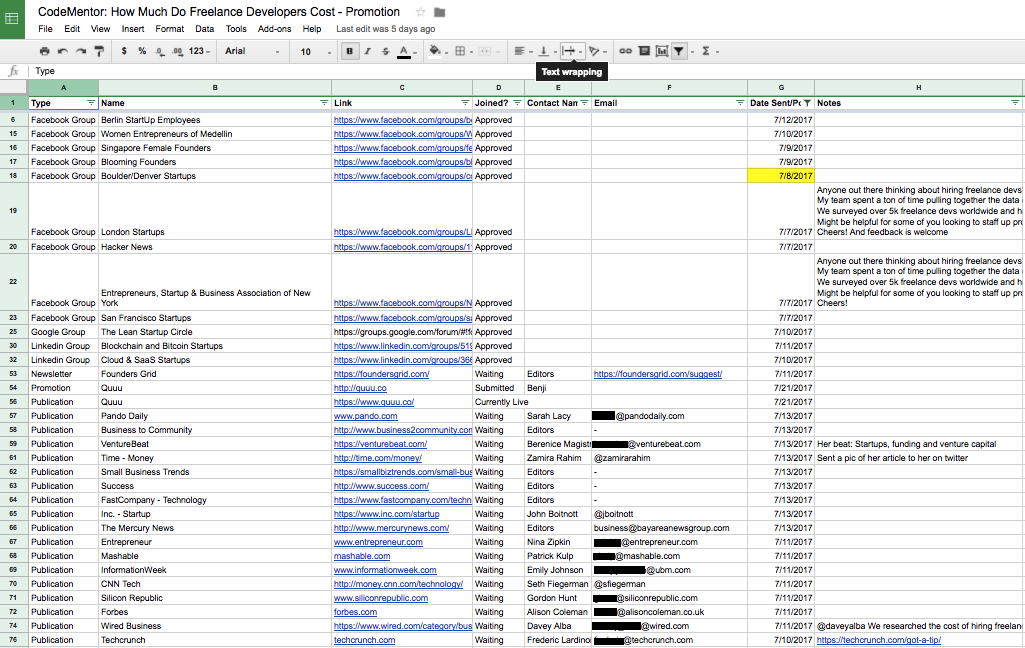
Step 2: Finding & Pitching ONE Journalist
Pitching is less about throwing things at a wall and seeing if it sticks and all about presenting journalists with win-win content.
Your aim is to identify the ONE journalist/editor/staff writer at a publication that is MOST likely to cover your story. Then, help them do their job by providing a compelling angle and easy follow-ups.
Why only one? Because journalists talk to each other. Knowing that you sent 10 pitch emails to their entire staff is one quick way of sending your email straight to the Trash folder. All journalists at the publication cover different beats. I know it will feel strange to only target one, but know that there is only one “best fit” journalist for your article.
Find him or her, and send a thoughtful pitch.
Here’s an example of a pitch that I wrote to a writer at The Next Web.
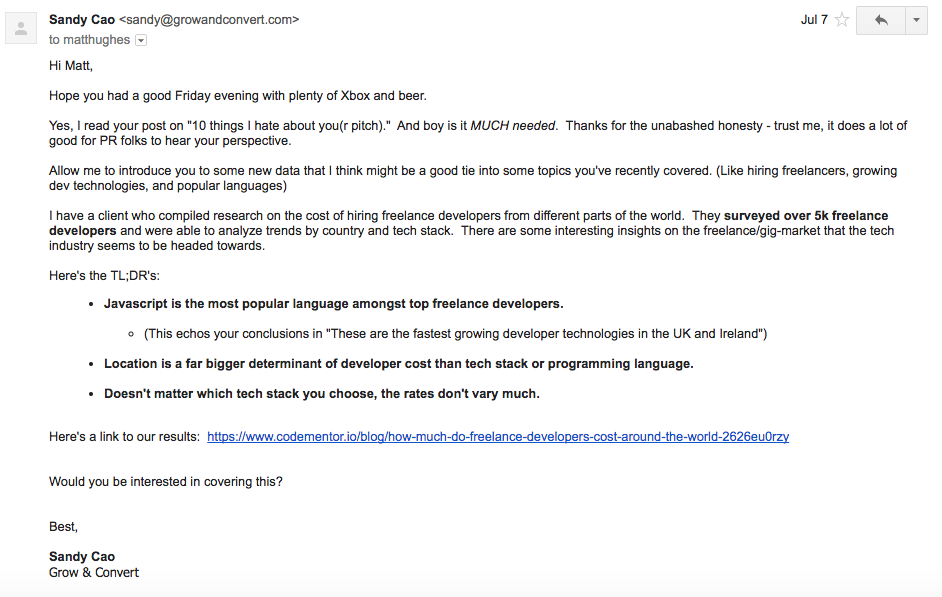
Matt got back to me with some feedback on the pitch. Mind you, this is a journalist answering on a Saturday.
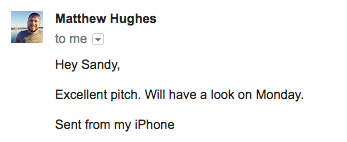
Unfortunately, Matt was covering other topics at the time and passed on this piece. Even though journalists may be busy covering one topic, you shouldn’t let it deter you from pitching. They may find your story more interesting or may use it down the line. At the very least I’m no longer a totally “cold” contact to Matt if I decide to send another good article in the near future.
I’ve outlined below the strategies I used to get Matt’s “Excellent pitch” response.
Step 3: Write a Pitch Worth Reading
Subtly Reference The Journalist’s Work
When you think you’ve found a great journalist to pitch, read some of their recent articles to get a feel for what kind of stories they write.
I wove the references of Matt’s articles into my email so I’m indirectly letting him know that I am paying attention to his work.
Subtle is the keyword here. Starting an email off with “Great job on this article “(Insert Article Title Here)!!” and then not actually explaining why the article was interesting to you does not help your chances. It will make you seem enthusiastically insincere.
Don’t worry about the length of your pitch. It’s a myth that journalists will not read through to the end of a long pitch. If you distribute references to their work that prove you’ve done your research – they will read it all. Twice.
Make Your Pitch Easy to Read
Paragraph spacing and bullet points are essential. No one wants to read a solid block of text. Especially when you have 100 other solid blocks of texts sitting in your inbox to read.
Here is an example of a pitch I wrote.
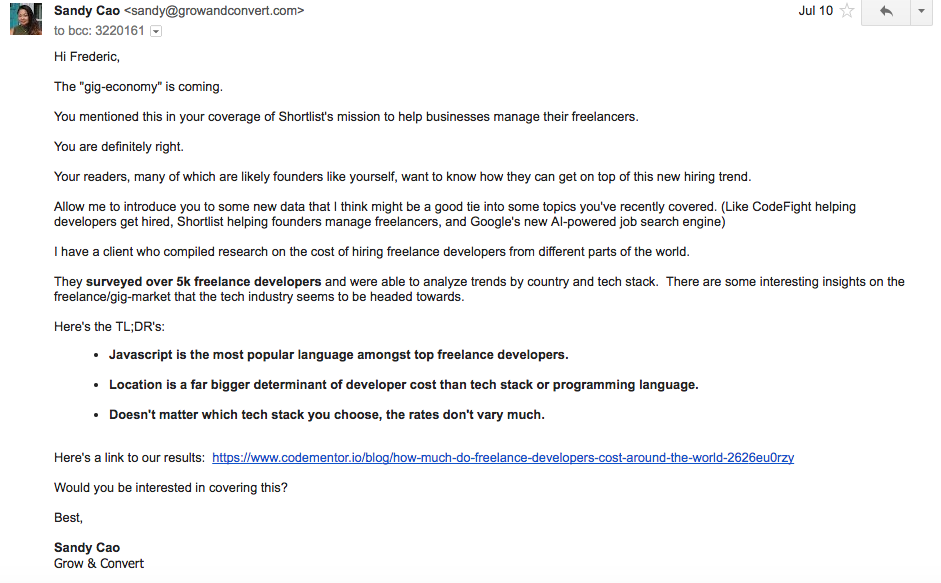
Contrast that with the same pitch, except I chunk the sentences into paragraphs. Immediately, it becomes more daunting to read.
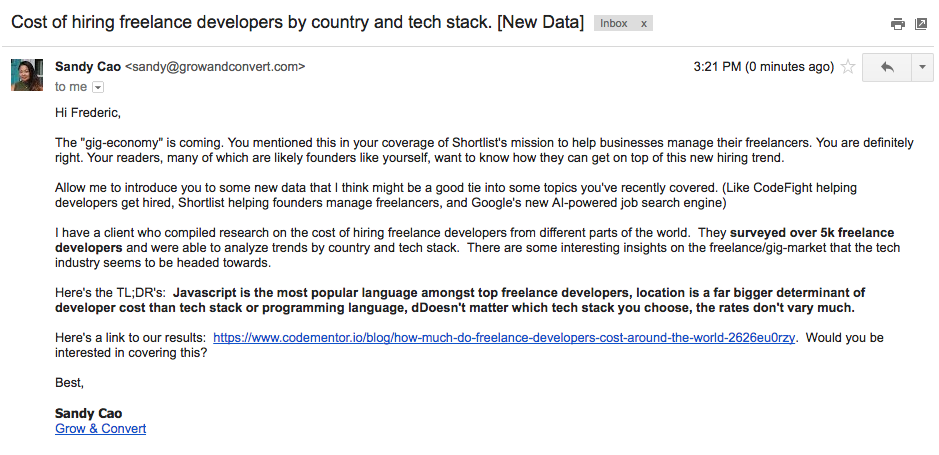
The Subject Line Matters
Always try to generate an angle for the story with your email subject line.
Oftentimes, journalists will not have the luxury of time to read beyond your email’s subject line. Help them construct the angle in their mind with the memo so that they may remember to come back to it later.
Essentially your job is to help the journalist do his/her job. Make it as easy as possible for them to cover your article by generating the angle(s).
Here are some examples below:
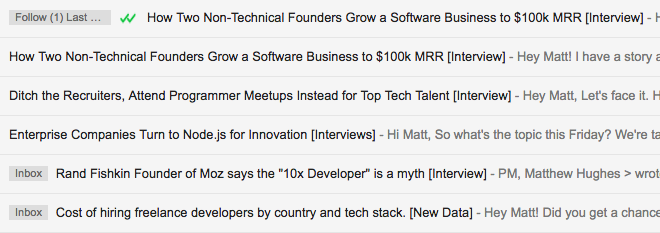
If All Else Fails, Use the Contact Us Form
Please, don’t turn your nose up at the “Contact Us” section of each publication’s website.
Using it might seem like you’ll be thrown directly into a spam box, but trust me, there’s likely a human on the other side.
This is precisely how Small Business Trends found our article. I resorted to their contact us form when I couldn’t find any of their staff writer’s emails. (This is even more of a clue that they will have someone manning their Contact Us form)
And sure enough, the staff writer that I thought would take interest in the article picked it up.
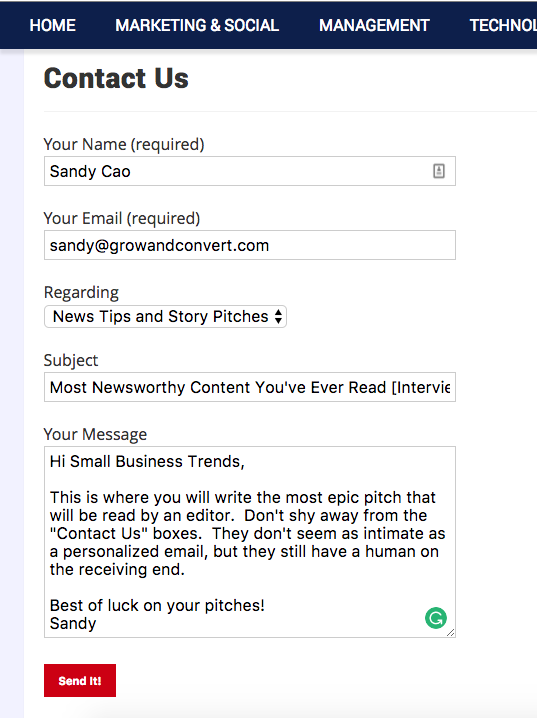
So if you’re looking for press coverage, begin with press-worthy content. Put in the legwork at the front end to make sure journalists have something that their readers will enjoy consuming.
What We Could Have Done Better
We’re constantly trying to improve the performance of our pieces. Sometimes it takes a bit of retrospection to understand where we could have done better.
Here’s what we think could have made a difference:
- The piece did not have enough controversy. Not taking a definitive angle with the headline was a missed opportunity to promote the piece and it’s potentially controversial findings. This leads to the next improvement.
- It lacked a clear theme. We wanted to give the reader a look into our client’s expansive survey results, but by showcasing all of the findings we weren’t able to highlight a single one. It would have been a stronger article if it had a clear conclusion.
We have a feeling that the piece could have had more success as multiple articles, and possibly even a series.
Headlines like these:
“The World’s Most Cost-Effective Countries to Hire Developers”
“Most Expensive Places in the World to Hire a Developer”
“Hourly Rate of Freelance Developer By Their Tech Stacks.”
These all have specificity, a sprinkle of controversy, and a clear theme.
If you’re interested in follow how this case study and future case studies unfold, sign up for updates on new blog posts here. And of course if you’re interested in having us do this for your company, you can learn more here.
Want us to write an in depth case study or story like this about you or your company? We’ll also drive traffic to it. Apply here.








